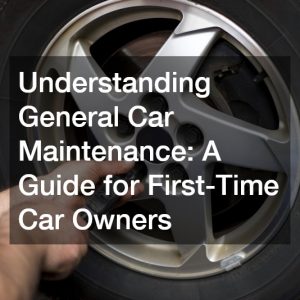Car wrapping has gained momentum as a popular method to change a vehicle’s appearance without permanent paint jobs. This article will navigate you through the essentials of car wrapping, providing clear information to help you get started with confidence.
1. Understanding Car Wrapping?
Car wrapping involves covering a vehicle’s surface with a thin, adhesive vinyl film that can be customized in color, pattern, and finish. This technique offers an alternative to traditional paint jobs, allowing for versatility and reversibility when the wrap is no longer desired.
The materials used in car wraps typically include high-quality vinyl that conforms to various surfaces of a car, enhancing both aesthetics and protection. Additionally, car wraps can even protect the original paint from damage caused by UV rays, minor scratches, and road debris. Unlike permanent paint jobs, car wraps can be removed, revealing the unaltered paint underneath. This makes car wrapping an attractive option for those who want to temporarily change their vehicle’s appearance or protect it for resale purposes.
The process of applying a car wrap begins with cleaning the vehicle’s surface meticulously to ensure the vinyl adheres properly. Once the surface is prepared, the wrap is applied in sections, avoiding any potential air bubbles or wrinkles for a smooth finish. Professionals use specialized tools such as heat guns and squeegees to stretch and conform the vinyl over complex curves and edges of the vehicle. This attention to detail ensures that the wrap looks seamless and mimics the appearance of a high-quality paint job. After application, the wrap is scrutinized for any imperfections and undergoes a final inspection before the job is considered complete. This careful process ensures durability and the desired aesthetic outcome, leaving the vehicle with a professional and personalized look.
2. Budgeting For Car Wrapping
The cost of car wrapping can vary widely depending on several factors, including the size and model of the vehicle, which dictates the amount of material needed. Additionally, the type of vinyl—whether it’s a standard color, metallic, or chrome finish—can significantly influence the overall price. Design complexity, such as custom graphics or intricate patterns, can increase costs as well, due to the extra time and expertise required. Labor costs play a role too, with highly skilled professionals commanding higher fees to ensure a flawless application. Ultimately, a basic car wrap might cost between $2,000 to $5,000, while more complex designs could exceed $10,000, offering a range of options for different budgets and preferences. Budgeting for a car wrap involves understanding these variables to anticipate potential expenses.
When planning for a car wrap, it’s important to budget not only for the initial installation but also for any potential maintenance or touch-ups. This ensures that the wrap remains pristine and appealing over time, protecting your investment in the long run. Consulting with several professionals to obtain quotes will help in comparing prices and services, ensuring the best value is chosen without compromising on quality. By doing so, one can allocate the necessary funds and avoid financial surprises during the wrapping process. Consider potential additional costs, such as removal fees if the wrap will be temporary or touch-ups if minor wear and tear occur. Being thorough in budgeting creates a comprehensive financial plan for achieving the best possible outcome for your vehicle’s new look.
3. Avoiding Common Mistakes
One common mistake among DIY wrappers is failing to adequately clean the vehicle beforehand, which can lead to poor adhesion and imperfections. Ensuring the surface is immaculate can alleviate many issues and improve the longevity of the wrap. Another frequent error involves improper stretching and heating of the vinyl, which can cause it to lose elasticity and develop unsightly wrinkles. Utilizing tools such as heat guns correctly can help in achieving a smoother application. Finally, cutting vinyl too early and inaccurately may result in uneven edges and wasted material. Precision in measurement and cutting will not only conserve resources but also contribute to a better overall finish.

4. Maintaining Your Car Wrap
To maximize the life of a car wrap, routine maintenance, such as hand washing with mild soap and water, is recommended to prevent dirt and grime accumulation. Avoiding automatic car washes with harsh brushes can preserve the wrap’s quality. Protecting the vehicle from prolonged sun exposure by parking in shaded areas or using a car cover will prevent fading and maintain vibrancy. Regular inspections for signs of wear and timely repairs can prevent minor issues from escalating. By implementing these maintenance practices, vehicle owners can ensure their wrap remains visually appealing and durable, prolonging the investment and keeping the car looking fresh for years.
Car wrapping offers a versatile and reversible option for altering a vehicle’s appearance while protecting its original paint. By understanding the process, costs, and maintenance involved, enthusiasts can make informed decisions, whether opting for professional services or venturing into a DIY project.





